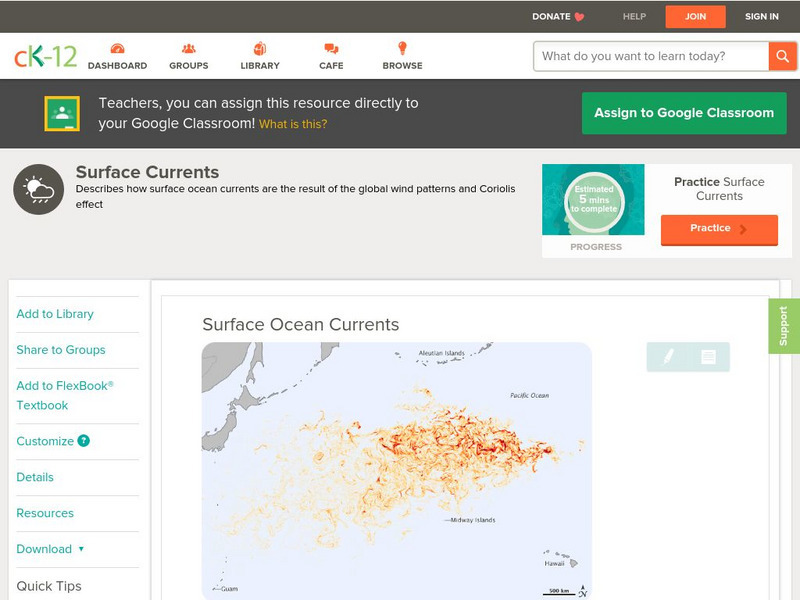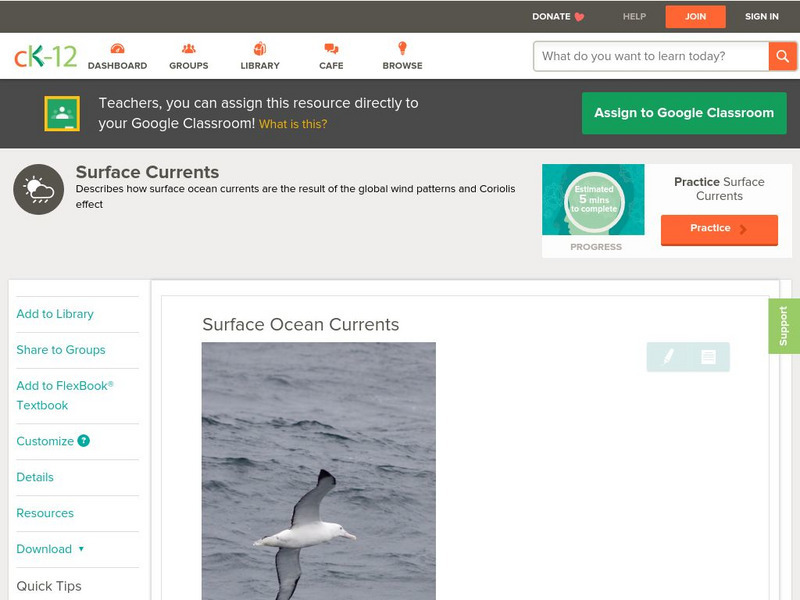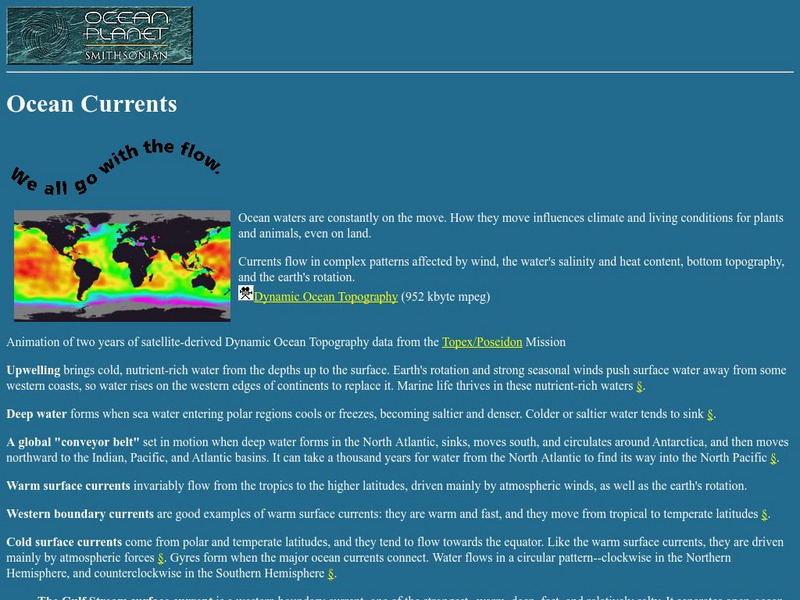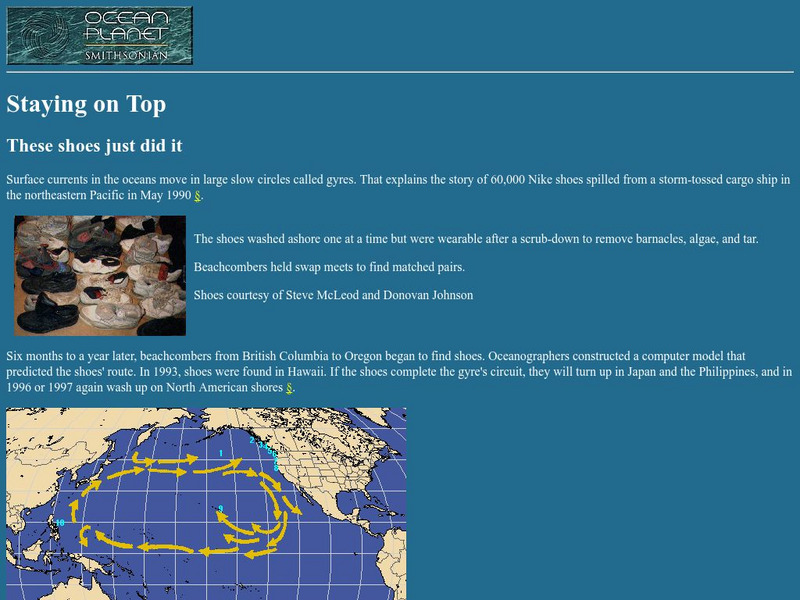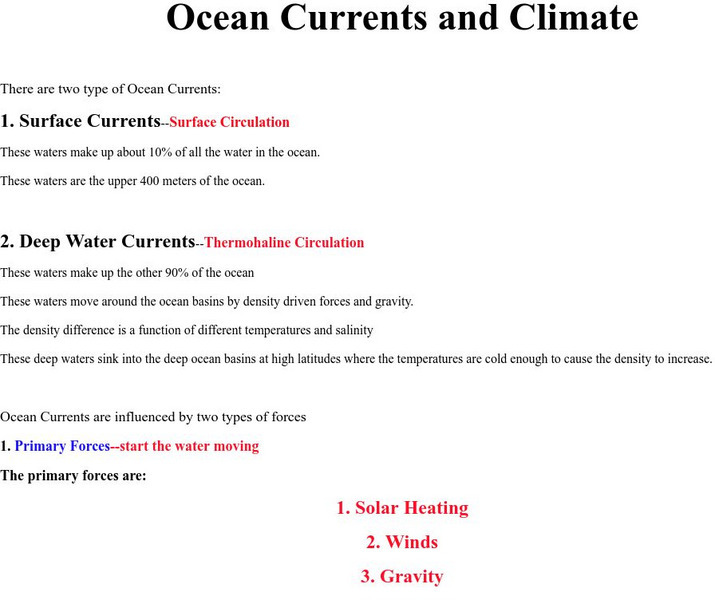Hi, what do you want to do?
Curated OER
Is Air a Fluid?
Students use baking soda, vinegar, matches, and other materials to pour gas. In this air lesson plan, students use the materials to pour gas and learn that air can be a fluid like a liquid.
Curated OER
Water Density and Stability Lab
Students observe how different water densities and salinity control the depth at which different water masses occur. Submarines are used as a case study. This is a well-designed with an excellent worksheet.
Curated OER
Biomes: Extreme Climate
Middle schoolers discuss the causes of global warming. In this earth science lesson, students examine how global warming is connected to the arctic and world climate. They write a paragraph about their interconnection.
Curated OER
Air Masses
Students examine the physical characteristics of several types of air masses to discover how air masses can be identified and defined by their temperature and moisture content.
Curated OER
Fallout!
Learners plot the locations of fallout from two disasters that polluted much of the world's air. They plot the ash fallout from the 1980 Mt. St. Helen's eruption to see what the wind patterns in the United States look like overall. Next...
Curated OER
Musical Plates
Sixth graders engage in a study of the plates and how they are part of the formation of the ever changing landscape of planet earth. They access web sites that have applications for observation and conducting different activities. The...
Curated OER
Water Cycle
Students identify and define evaporation, condensation, precipitation and also, how these interact to complete the water cycle. They identify that water moves in a contimuous cycle, which is powered by the sun. Finally, students name...
Curated OER
Winter Facts Fun-Crossword Puzzle
In this winter crossword puzzle worksheet, students complete a 19 word puzzle using clues given.
Rice University
Rice University: Ocean Currents and Tides
This URL will start you out at the site map for Rice University's study of longitude and navigation. Scroll to the section titled "Oceans" and you will find some very good information on surface currents, especially those of the South...
CK-12 Foundation
Ck 12: Earth Science: Surface Ocean Currents
[Free Registration/Login may be required to access all resource tools.] Describes how wind patterns and other factors cause ocean surface currents.
CK-12 Foundation
Ck 12: Earth Science: Surface Ocean Currents
Describes how wind patterns and other factors cause ocean surface currents. [Free Registration/Login may be required to access all resource tools.]
NASA
Nasa: Ocean Motion: Wind Driven Surface Currents: Upwelling and Downwelling
Explains what upwelling and downwelling of ocean currents are, and the impact of Ekman transport and the Coriolis effect on current movement as well as where they occur. The effects of upwelling and downwelling on water temperature and...
TeachEngineering
Teach Engineering: One World Ocean
In this activity, students learn about ocean currents and the difference between salt and fresh water. They use colored ice cubes to see how cold and warm water mix and how this mixing causes currents. Also, students learn how surface...
Smithsonian Institution
National Museum of Natural History: Ocean Planet: Ocean Currents
The Ocean Planet exhibit at the Smithsonian explains the general features of ocean circulation. A general look at upwelling, deep water, and currents are combined for an overall view.
CK-12 Foundation
Ck 12: Earth Science: Surface Ocean Currents Study Guide
[Free Registration/Login may be required to access all resource tools.] This study guide summarizes key points about surface currents on the ocean. Includes a few questions to check for understanding.
Georgia Department of Education
Ga Virtual Learning: Moving Water
Students learn about surface currents, wave characteristics, and the forces that cause tides in the World Ocean.
Smithsonian Institution
National Museum of Natural History: Ocean Planet: Staying on Top
This is the story of the infamous Nike shoes that washed off a cargo ship. The shoes later showed up along beaches, giving oceanographers another clue as to how ocean currents move.
Simon Fraser University
Chem1 Virtual Textbook: The Hydrosphere and the Oceans
As part of the General Chemistry Virtual Textbook, this site examines a variety of topics related to the hydrosphere and the oceans. Topics covered include where the water came from, the hydrologic cycle, Oceanic circulation, atmospheric...
US Navy
Office of Naval Research: Oceans in Motion Currents
Use this site to learn what the Navy has to say about ocean currents and then test your knowledge with their quiz.
Other
Nanoos: Well, Well, Well [Pdf]
This lesson provides students the opportunity to investigate the relationship between winds, surface currents, sea temperature and upwelling and downwelling off the coast of Oregon and Washington.
Cosmo Learning
Cosmo Learning: Ocean Currents
The atmosphere forces the ocean in three ways: addition and removal of heat, precipitation and evaporation, and wind stress. The former two processes influence the density of sea water. Gravity acts on these density differences to cause...
University of Southern California
University of Southern California: Ocean Currents and Climate
The climate of our planet is greatly affected by Earth's oceans. Learn here about the different oceanic currents and the role those currents play on climate.
Other
Rutgers: c.o.o.l. Class: Physics Project: Plankton and Ocean Current
This c.o.o.l. Project focuses on tiny sea plankton and how they move in the oceans. Follow the scientific process outlined on the left, calculate and collect data to form your own predictions.
Other
Earth Science: Earth's Surface and Heat [Pdf]
This textbook chapter looks at the role of temperature in sustaining life on Earth and on weather and climate. It discusses the Earth's movements and the seasons, the circulation of the oceans, wind and weather, and the water cycle....














